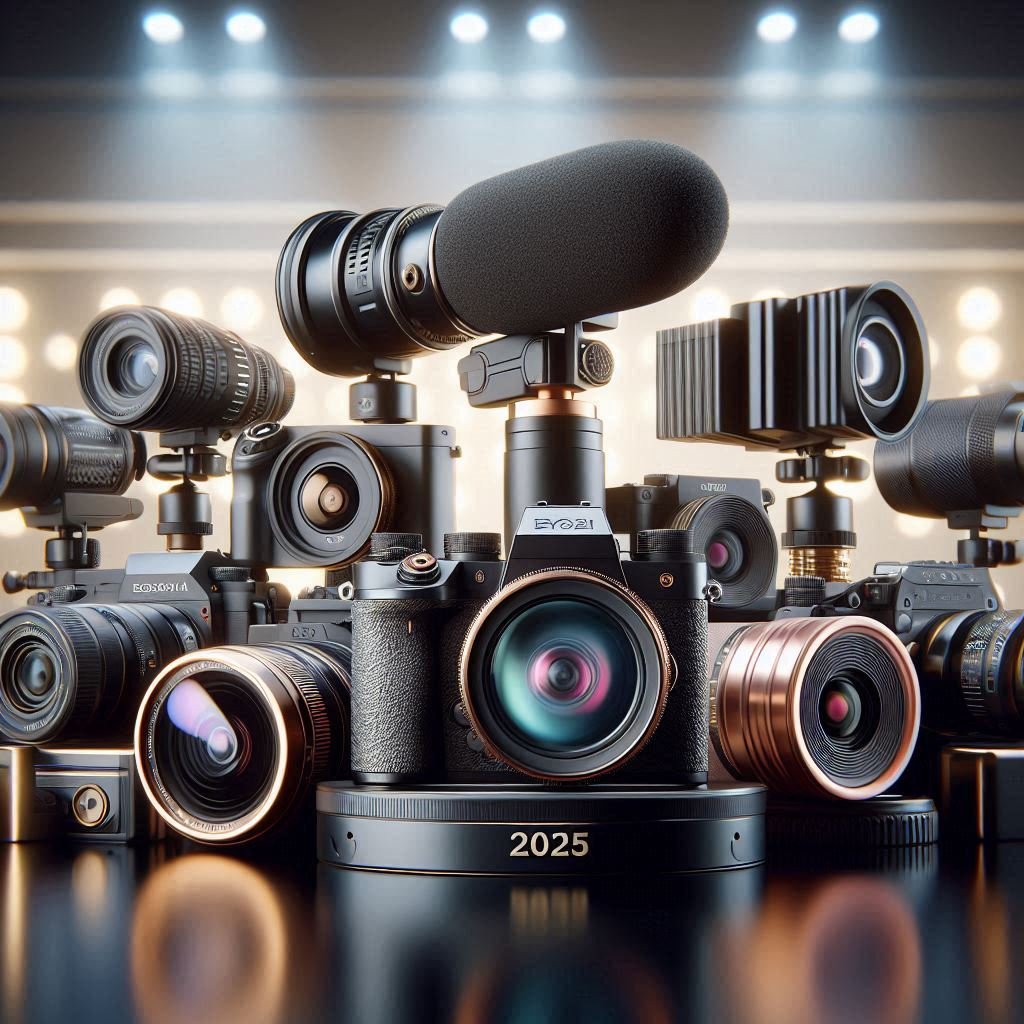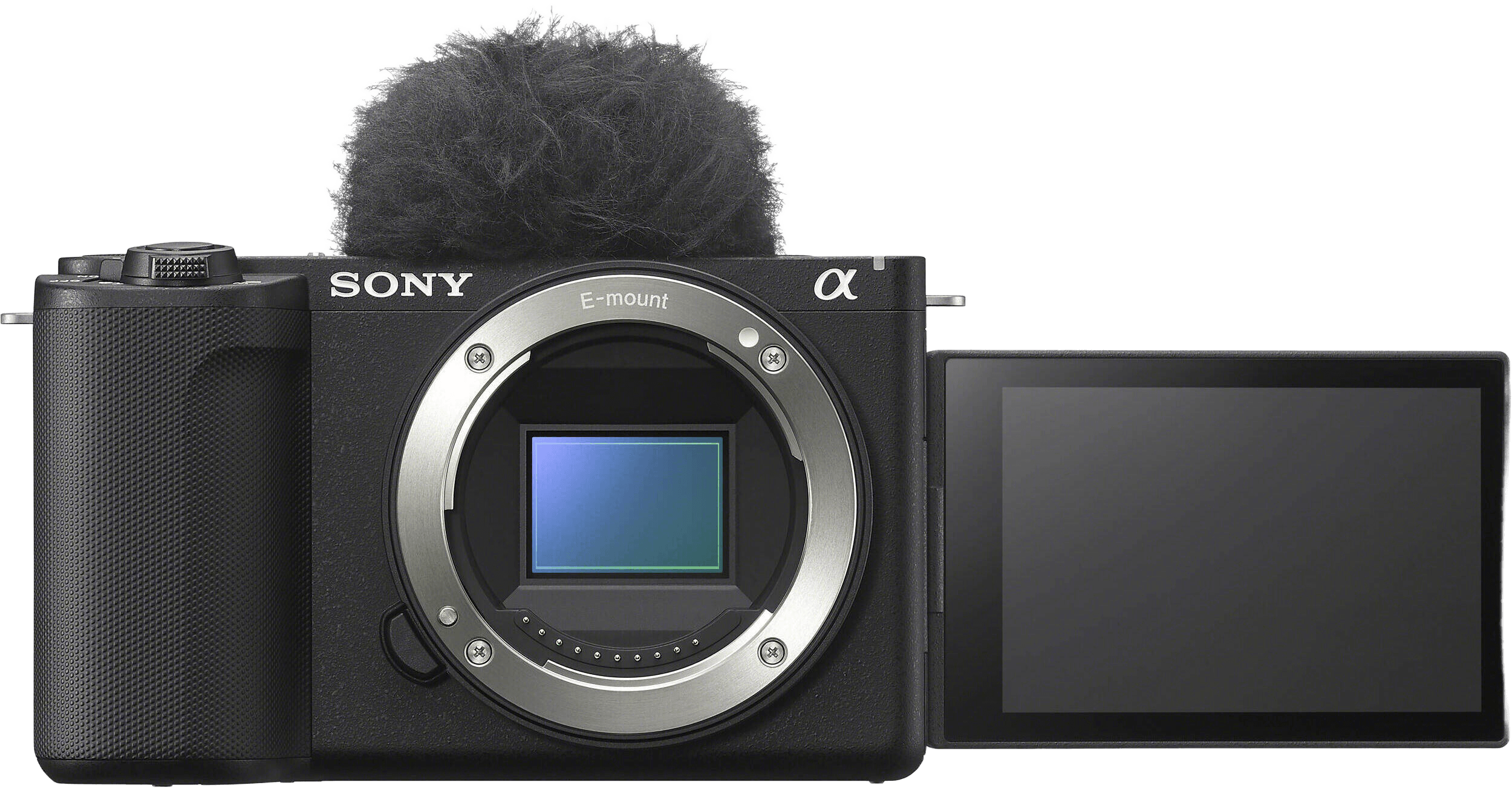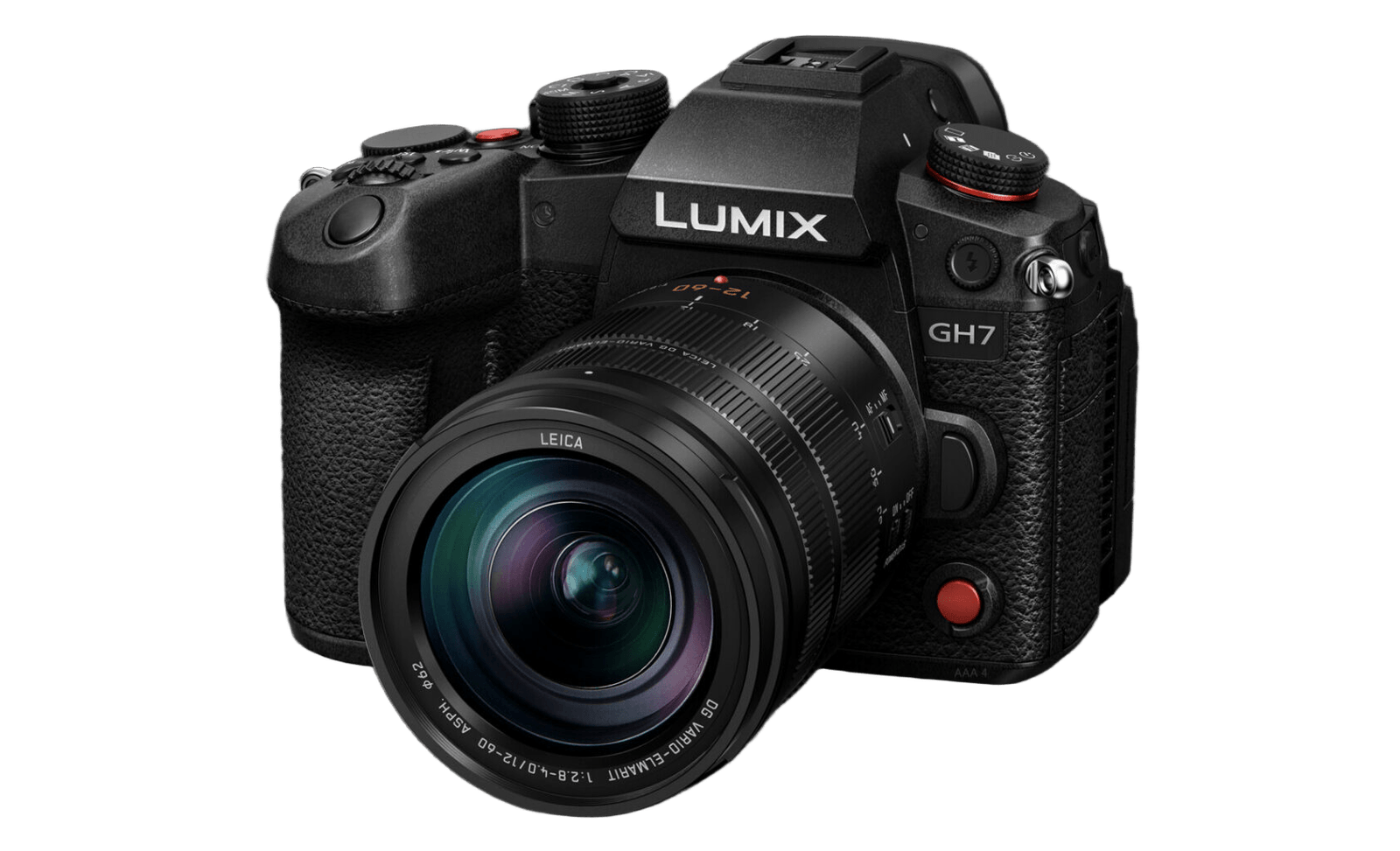Vlogging continues to evolve, and 2025’s top vlogging cameras offer a range of features tailored to content creators, filmmakers, and influencers. Whether you’re looking for cinematic quality, portability, or AI-powered technology, these vlogging cameras deliver professional-grade video performance.
Table of Contents
| Shop on amazon | Camera Model | Sensor | Video Resolution | Autofocus System | Special Features |
|---|---|---|---|---|---|
| Sony ZV-E10 II | 26MP APS-C BSI CMOS | 4K 60p (10-bit) | AI-Powered Autofocus | S-Cinetone, Flip Screen, Live Streaming | |
| Insta360 X5 | Dual-Lens 360° | 8K 360° Video | AI Tracking & Stabilization | Invisible Selfie Stick, VR Ready | |
| DJI Osmo Pocket 5 | 1-Inch CMOS | 4K 120fps | Face Tracking | Built-in Gimbal, Compact Design | |
| Canon R50 | 24MP APS-C CMOS | 4K 30p | Dual Pixel CMOS AF II | Flip Screen, Great Low-Light Performance | |
| Panasonic Lumix GH7 | Micro Four Thirds | 6K Video | Advanced AI Autofocus | Flip Screen, Pro-Grade Stabilization |
Sony ZV-E10 II – The Mirrorless Vlogging Camera
The Sony ZV-E10 II is among the top vlogging cameras for content creators who prioritize quality and performance.
Key Features & Specs:
- Sensor: 26MP APS-C BSI CMOS
- Video Resolution: 4K 60p (10-bit), Oversampled from 6K
- Autofocus: AI-Powered Tracking, 759 Phase-Detection Points
- Audio: Three-Capsule Directional Microphone
- Screen: Flip-Out Touchscreen
- Connectivity: USB-C, Live Streaming Support
Pros & Cons:
✅ Exceptional 4K video quality
✅ AI-enhanced autofocus for fast subject tracking
✅ Interchangeable lenses for versatile shooting
❌ No in-body stabilization (relies on lens stabilization)
❌ Slight crop at 60p
Best Use Cases:
📌 Vlogging & YouTube – Great for daily vlogs and tutorials
📌 Interviews & Livestreaming – Clear audio and professional video quality
Compatible Lenses:
- Sony E-mount lenses (Wide-angle, prime, zoom options)
- Sigma 16mm f/1.4 DC DN (Great for bokeh and low-light filming)
Comparison with Alternatives:
- Canon EOS R50 – Compact, beginner-friendly mirrorless camera with simpler autofocus.
- Panasonic Lumix GH7 – Professional 6K hybrid camera for cinematic video.
Buying Guide & Recommendations:
The Sony ZV-E10 II is ideal for content creators who need high-quality 4K video and lens flexibility. It’s best suited for studio and stationary vlogging, though a gimbal may be needed for handheld filming.
Insta360 X5 – The 360° Vlogging Camera
Key Features & Specs:
- Sensor: Dual-lens 360°
- Video Resolution: 8K 360° Video, AI-enhanced Stabilization
- Effects: Invisible Selfie Stick, Bullet-Time Mode
- Connectivity: Wireless Transfer, AI Editing
Pros & Cons:
✅ Immersive 360° storytelling
✅ AI-powered stabilization for smooth footage
✅ Multiple creative effects built-in
❌ Requires post-editing to reframe standard videos
❌ Lower detail in non-360 single-lens mode
Best Use Cases:
📌 Adventure & Travel Vlogging – Captures every angle seamlessly
📌 VR & Immersive Content – Best for interactive storytelling
Compatible Accessories:
- Invisible Selfie Stick (For third-person views)
- Dive Case (Waterproofing for underwater 360° filming)
Comparison with Alternatives:
For those interested in versatile options, the Insta360 X5 stands out as one of the best 360° vlogging cameras available.
- GoPro Max – Another 360° camera, but with lower resolution (5.6K) and fewer AI effects.
- DJI Osmo Pocket 5 – A compact, handheld stabilizer with 4K video, but no 360° capabilities.
Buying Guide & Recommendations:
The Insta360 X5 is ideal for travel vloggers and creators exploring VR/immersive video formats. If you’re looking for unique angles and futuristic editing tools, it’s a great choice.
DJI Osmo Pocket 5 – The Compact Stabilized Vlogging Camera
Key Features & Specs:
- Sensor: 1-Inch CMOS
- Video Resolution: 4K 120fps
- Stabilization: Built-in 3-axis gimbal
- AI Tracking: Face Tracking & Autofocus
- Touchscreen: Flip-Up Display
Pros & Cons:
✅ Ultra-smooth cinematic footage with gimbal
✅ Compact and pocket-sized design
✅ High-frame rate video for slow-motion shots
❌ No interchangeable lenses
❌ Limited battery life for extended filming
Best Use Cases:
📌 Travel & Run-and-Gun Filming – Perfect for on-the-go creators
📌 Selfie & Face Tracking Vlogs – AI tracking ensures steady framing
Compatible Accessories:
- Magnetic Mounts (For attaching to surfaces)
- Wireless Mic Kit (Enhances audio for interviews)
Comparison with Alternatives:
- Sony ZV-E10 II – A mirrorless option with interchangeable lenses but no built-in stabilization.
- Canon EOS R50 – Compact & entry-level, but without advanced stabilization like DJI Osmo Pocket 5.
Buying Guide & Recommendations:
The DJI Osmo Pocket 5 is perfect for creators who need compact, stabilized footage for travel vlogs and action scenes.
Canon EOS R50 – The Hybrid Mirrorless Camera
Key Features & Specs:
- Sensor: 24.2MP APS-C CMOS
- Video Resolution: 4K 30p (No Crop)
- Autofocus: Dual Pixel CMOS AF II
- Screen: Vari-Angle Touchscreen
The DJI Osmo Pocket 5 is a compact choice among vlogging cameras, perfect for on-the-go filming.
Pros & Cons:
✅ Beginner-friendly interface
✅ Great low-light performance
✅ Flip-screen for easy vlogging
❌ No in-body stabilization
❌ No headphone jack for audio monitoring
Best Use Cases:
📌 Entry-Level Vlogging – Perfect for beginners upgrading from smartphones
📌 Interviews & Tutorials – Reliable autofocus for talking-head videos
Compatible Lenses:
- Canon RF 16mm f/2.8 STM (Wide-angle option)
- Canon RF 50mm f/1.8 STM (Great for portraits and depth)
Buying Guide & Recommendations:
The Canon EOS R50 is ideal for new vloggers seeking a mirrorless setup without complexity.
Canon PowerShot V10 – The Beginner-Friendly Vlogging Camera
Key Features & Specs:
- Sensor: 1-Inch CMOS
- Video Resolution: 4K UHD 30p
- Lens: Built-in Wide-Angle (19mm)
Pros & Cons:
✅ Ultra-portable design
✅ Built-in stand and touchscreen
✅ Simple, beginner-friendly operation
❌ Limited customization options
❌ No interchangeable lenses
Best Use Cases:
📌 Casual Daily Vlogging – Best for lifestyle and social media creators
Buying Guide & Recommendations:
The PowerShot V10 is a perfect entry-level option for vloggers who want simplicity and convenience.
Panasonic Lumix GH7 – The Professional Filmmaking Camera
Key Features & Specs:
- Sensor: 25.2MP BSI CMOS
- Video Resolution: 5.7K 60fps, C4K 120fps
- Stabilization: Pro-Level IBIS
- Autofocus: Phase-Detection AF
When it comes to hybrid capabilities, the Canon EOS R50 remains a favorite among aspiring vloggers and is one of the best vlogging cameras in its class.
Pros & Cons:
✅ Pro-quality video with cinematic colors
✅ Advanced autofocus and stabilization
✅ Unlimited recording time
❌ Expensive compared to beginner cameras
❌ Larger size for travel vlogging
Best Use Cases:
📌 Filmmaking & High-End Content Creation – Best for cinematic, scripted videos
Buying Guide & Recommendations:
The Lumix GH7 is ideal for experienced vloggers who need cinematic video and professional control.
Choosing the right vlogging camera depends on your style, needs, and budget. Whether you need 360° immersive footage, professional stabilization, or an easy beginner setup, there’s a perfect vlogging camera for every creator! 🚀🎥 With options like the Sony ZV-E10 II, Insta360 X5, and DJI Osmo Pocket 5, you’re sure to find the ideal vlogging camera.
For beginners, the Canon PowerShot V10 is an excellent entry point into the world of vlogging cameras.
The Panasonic Lumix GH7 is a robust option for seasoned creators seeking professional-grade vlogging cameras.


